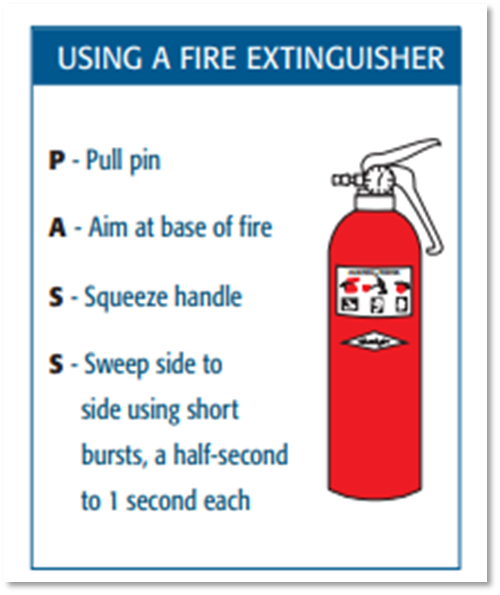
FIRE SAFETY
Vessel fires can be deadly and fast moving. Boat operators must make sure their vessel has readily available and working fire extinguishers. There are two kinds: Fixed rechargeable and portable disposable fire extinguishers. The U.S. Coast Guard sets requirements for extinguisher type and size depending on boat size and engine enclosure.

Beginning in April 2022, the U.S. Coast Guard issued new regulations for disposable fire extinguisher dates of manufacture and label classifications.
- Fire extinguishers must not be more than 12 years old according to the date of manufacture stamped on the bottle. Boaters can find the manufacture date stamped into the bottom of the bottle or near the UL label.
- Vessels model year 2018 or newer must carry fire extinguishers labeled as 5-B, 10-B or 20-B. The old labels of B-1 or B-11 are no longer acceptable.
- Vessels model year 2017 or older may keep serviceable extinguishers labeled B-1 and B-11 if they are less than 12 years old.
Fire Extinguisher Requirements for Recreation Boats

- Inboard or stern-drive engines
- Closed compartments where portable fuel tanks may be stored
- Double-walled hulls that are not sealed or not filled with floatation material.
- Enclosed living spaces
- Closed stowage compartments in which combustible or flammable materials may be stored
- Permanently installed fuel tanks
Boat Operators should show all passengers where safety equipment is stored. Make sure your passengers know what to do in case of an emergency.
The following chart describes the required fire extinguisher type by boat size. It includes the newer UL-listed equivalents as 5-B, 10-B and 20-B.
Remember, disposable fire extinguishers must be replaced no later than 12 years from date of manufacture stamped on the bottle.

How to use a Fire Extinguisher

- All Extinguishers must be readily accessible, preferable not stowed next to common fire sources. It is recommended that they be attached to the boat
- Before using portable extinguishers, read the instructions.
- Never use a foam extinguisher on electrical fires because these extinguishers contain water, and you might be electrocuted.
- Never try an extinguisher to see if it works properly-the valves may not reseal and the extinguishing material may gradually leak.
- After using an extinguisher, recharge it before using it again.
- Check your fire extinguisher at least once every six months for the pressure level and signs of powered on the nozzle. If the extinguisher contains a dry chemical extinguishing material, turn the extinguisher end -to-end. If the chemical is packed, shake it or hit the bottom with your hand to loosen it.
 Proper Disposal of Fire Extinguishers
Proper Disposal of Fire Extinguishers
Do not put your fire extinguishers in your curbside recycling bin with other metal cans. For proper fire extinguisher disposal contact your County Household Hazardous Waste Collection Center or visit Earth911.org
